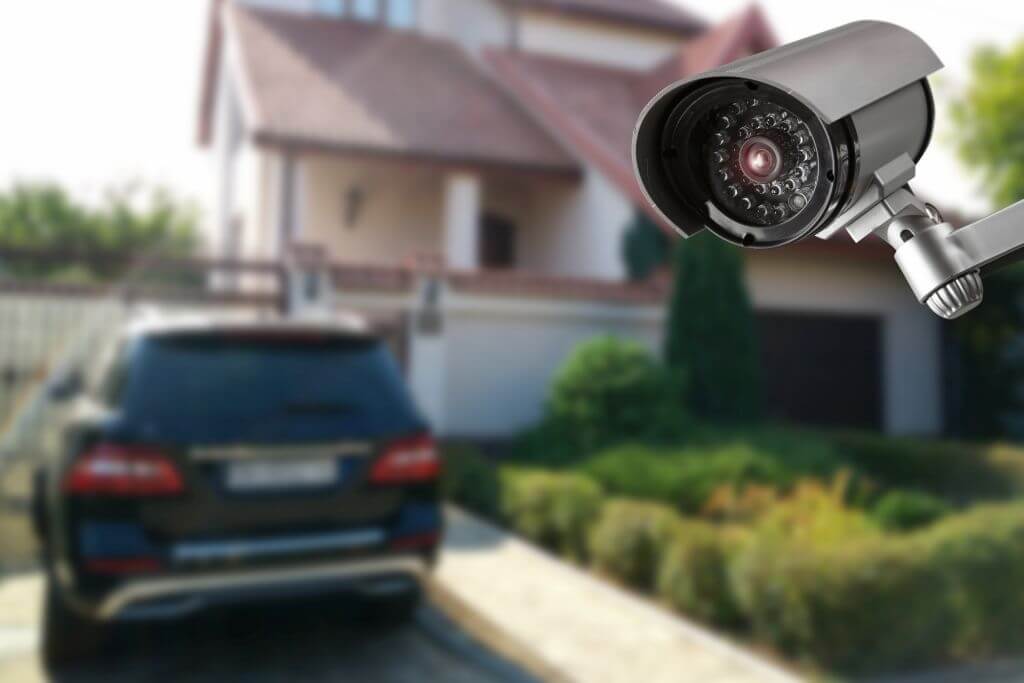Even if he is still a bit shy in some parts of the country, summer is just around the corner – and with it comes the holiday season that many people are looking forward to: packing seven things, leaving work and everyday life behind and simply switching off. But is everything at home really safe in the house or apartment?
To spare themselves these worries, many rely on surveillance cameras that can be checked remotely. However, there are various things to consider when installing and adjusting these cameras so as not to have the neighbours involuntarily in the picture and thus possibly break the law.
How to position cameras
The highest premise for the positioning of surveillance cameras is the observance of the fundamental right of free personality development (Article 2 (1) + Article 1 (1) GG) as well as the observance of the right to informational self-determination and the right to one’s own image (Federal Data Protection Act, §201a StGB).
Accordingly, one may film with a surveillance camera only the private property – thus the own house, the own garden and on private ways. On the photographs no neighbour properties may be to be seen, because there the rights of the respective owners apply. Public paths are also taboo, as passers-by must be able to stay there unhindered. If a path, such as an access path to a multi-party dwelling, is a private path, but is used by several owners, it may not be filmed there.
The same rules apply to camera dummies. Also these may be placed only in such a way that they have excluding the own property in the potential visor. The reason for this is that these camera dummies trigger a so-called surveillance pressure and are therefore equated with real cameras.
Permitted camera placement – that is permitted
Against this background, permanently installed cameras are ideal, because you can set them exactly to the desired shooting angle. Caution is required with pivoting cameras, so that they do not violate the legal requirements in any way. In addition, screens can be attached to the camera that exclude certain areas from the image. It is important that changes in camera positioning are clearly visible.It is not permitted to use cameras that could be remote-controlled to aim at other people’s property or public areas. An opaque cover of the camera is also seen as problematic, as neighbours and passers-by cannot assess how the camera is aligned and which area it is filming. As already mentioned, the surveillance pressure weighs more heavily than the actual shots for a possible court decision.
It is also important that passers-by can clearly see that a property may not simply be entered. A clear barrier such as a fence or a sign warning against surveillance must therefore be provided.
Exceptions
Exceptions to this rule are only possible in special exceptional cases where the interests of the owner prevail, for example because he has been a victim of crime on several occasions. An example would be the installation of a surveillance camera in the underground car park, if the own car was already damaged several times.
Even then, however, strict restrictions apply. In no case is it permitted to record intimate insights, such as into other people’s homes.
Surveillance cameras in apartment buildings
The landlord requires the consent of all tenants for the installation of surveillance cameras in and on apartment buildings or associated areas such as garbage houses, the backyard or communal gardens. In addition, the tenants must be informed in advance exactly where cameras will be placed, which areas they will film and at what times. In addition, it must be explained exactly who has access to the recordings and whether – and if so, for how long – the video material will be stored.If you would like to carry out video surveillance as a tenant, you need the landlord’s declaration of consent. In addition, the same rules apply as for owners: only the filming of private spaces and areas is permitted. If you also want to film communal areas, all other tenants must agree to this by means of a declaration of consent.
Here, too, there is an exceptional case: when an imminent attack could be averted by video surveillance and the danger cannot be averted in any other way.
Cover picture: Adobe Stock #135976466














